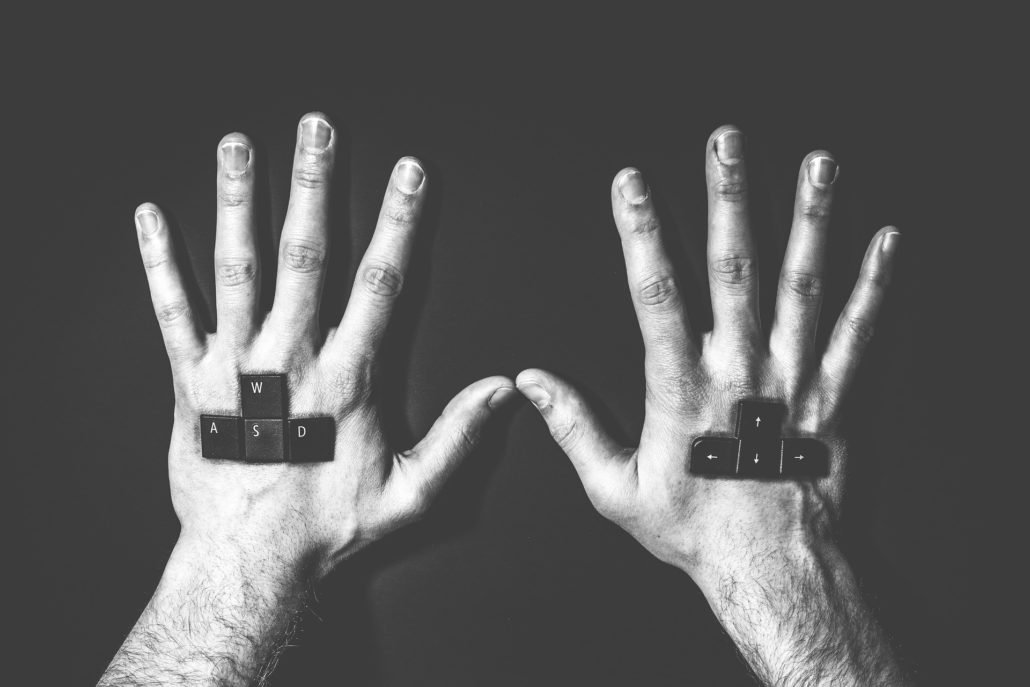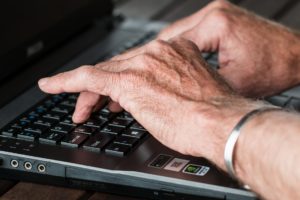How electronic note taking can help you succeed
Concentrating and paying attention to a work presentation or a class lecture can be difficult at the best of times. However, when you’re deaf or hard of hearing, understanding what’s being said and the terminology used can be downright impossible, which is why electronic note taking (ENT) for employees and students is such a valuable resource.
Having a note taker guarantees you equal access to the information from the classroom or workplace. Notes are visually appealing and easy to read and follow, logically organised, following the sequence of facts.
Electronic notes can be crucial to the success of a student in college or an employee’s career progress. This article provides you with an insight into the role of ENT in the lives of deaf and hard of hearing people, how the note taking process works and how to find a good electronic note taker.
What is electronic note taking and who is it for?
Electronic note taking (ENT) is a form of text based communication support predominantly used by deaf/deafened and hard of hearing people who have English as their first language and who require real-time captioned text in order to access spoken English.
An electronic note taker provides a summary of lectures, seminars, tutorials, meetings or discussions using a laptop computer or portable word processor. Electronic note takers can also provide a set of reference notes for BSL users who would use BSL/English interpreters to access spoken English rather than real-time text based communication support.
The main purpose of ENT is to provide the deaf or hard of hearing person with real-time text, displayed on a separate screen, so they can take part in the discussion and have access to the same information as their hearing peers.
Accurate note taking is especially important for deaf and hard of hearing students who:
- Require precise note taking while attending lectures and lipreading the instructor at the same time.
- Want to participate or follow along with discussions, presentations and movies.
- Need to write a test or fill in a quiz and have to understand the preceding instructions.
When I was studying for my professional careers consultant qualification, I had booked a verbatim speech to text reporter, a lipspeaker, and an electronic note taker. The speech to text reporter was great for giving me the full picture of what was being said so I could interact with everyone, whereas the note taker gave me a summary afterwards, so I had a small set of notes I could refer back to after a full week of lectures – as well as the hundreds of pages from the speech to text reporter! The lipspeaker allowed me to interact with my breakout group when we moved to a different room, as the note taker and speech to text reporter were restricted to the nearest plug socket for their laptops. Using all my favourite ‘tools in the box’ allowed me to have full access to the lectures although it meant I was constantly concentrating on the incoming information and didn’t get any breaks. People always forget the deaf person needs a break too!
An electronic note taker can write in real-time at 90wpm. At up to 150wpm, they would produce condensed notes. Here are two samples from my course, of a verbatim speech to text reporter, and an electronic note taker – they were both working at the same time in one lecture.
Sample: Speech to text reporter (real-time)
Sample: Electronic note taker (notes provided later)
It’s also useful to view a sample from an electronic note taker who was working in real-time at a conference: Symposium 2012.
What does an electronic note taker do?
The ENT types notes into the laptop, which is connected to the hard of hearing person’s laptop or a separate screen. The text is not a verbatim (word-for-word) account of what is said, but rather a summary to encapsulate and give meaning to the conversation. ENTs aim to capture the essence and flavour of what is said but cannot guarantee a verbatim output.
When the note taker types the summary into the computer, special captioning software like Note-Ed is used. The deaf user can take a copy of the notes home with them for revision.
How does it work?
The ENT setup can work in various ways:
- The text is streamedfrom the ENT’s laptop to the client’s laptop where the client can read the subtitles in real-time. Text can be streamed to one client laptop or multiple laptops.
- The text can be projected onto a plasma screen or large screen for larger audiences to read.
- The text can be streamed to remote locations over the internet for clients participating in conference calls or lectures and are not able to be on-site with the electronic note taker.
- ENTs can also caption live theatre performances using pre-prepared scripts.
At 121 Captions we specialise in remote electronic note taking, to either a large screen or client laptop, smartphone or tablet.
Benefits of using an electronic note taker
A big advantage of using an ENT is that they are generally quite affordable and can record more information because typing is much faster than writing. In fact, our note takers stream up to 150 words per minute.
The ENT will differentiate individual speakers and capture environmental sounds like laughter and applause. Background colour, text colour and font size can be changed to suit your specific preference.
Using 1Fuzion software further enables the ENT to overlay streamed text directly on top of presentation slides, which means that you don’t have to divide your attention looking from one screen to another.
How are note takers trained?
Electronic note takers who hold the Signature Level 3 Award in Note taking OR who hold a CACDP Level 2 Electronic Note taking Certificate/OCN Level 3 ENT cert AND have passed the Signature Note Taking Endorsement Course 2016 can register with NRCPD.
This means that the ENT has signed up to a professional Code of Conduct governing confidentiality and behaviour and must perform the same amount of CPD per year as a BSL interpreter or lipspeaker. NRCPD also has a disciplinary and complaints procedure which ENTs may be subject to.
How to choose an electronic note taker
To ensure you receive the best quality notes make sure your ENT has the appropriate level of education and qualification and is registered with the NRCPD. Use the below checklist to ensure you know what to look for in a good note taker:
- Good knowledge of the English language and its proper usage.
- Experience working with deaf people or organisations.
- Strong communication skills and interpersonal skills.
- Knowledge of the content areas.
- If you’re a student make sure the ENT works with students and staff in an educational context.
- Ability to adapt their level of English depending on the user’s needs.
- Understanding the different ways hard of hearing people learn using English, BSL and lipreading.
- Focused and responsive to the user’s needs.
- Understanding deaf people’s rights to equal information access.
- Confident in using speech to text software and other note taking programs.
- A good listener and respects confidentiality.
When you can’t hear or clearly understand the teacher, lecturer or presenter, it’s great to be able to read what the note taker has summarised. Electronic note taking, like other services such as lipreading, interpreting and the use of assistive listening devices, assists deaf and hard of hearing people to gain equal access to information in the classroom and the workplace.
Using the services of an electronic note taker is ideal for students and employees who prefer less verbatim output, but still, want real-time access to information. 121 Captions can provide note taking services onsite or remotely and we even provide transcriptions of audio recordings and subtitling on videos.
If you or your company is looking to invest in electronic note taking then contact us today.





Leave a Reply
Want to join the discussion?Feel free to contribute!